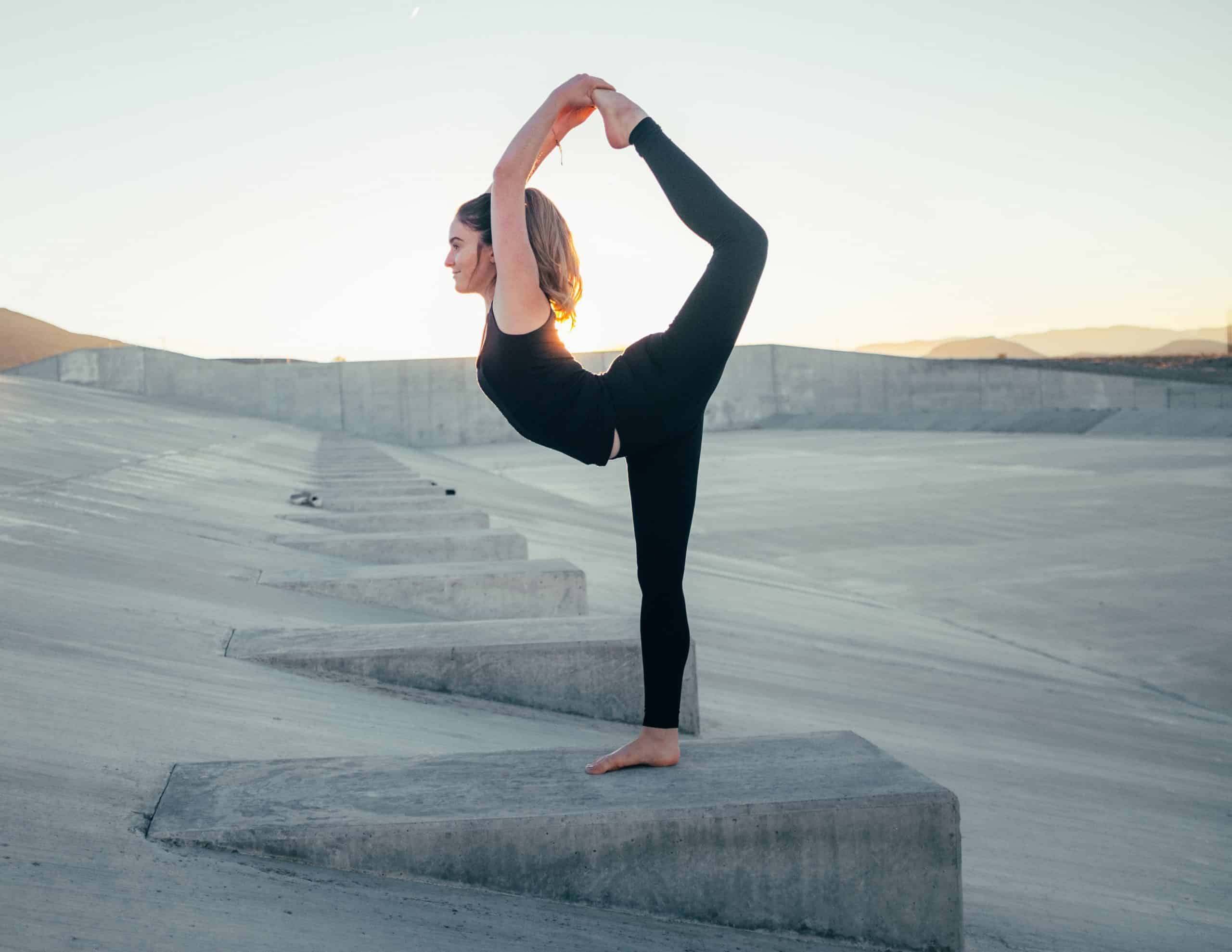It is simply a fact that men and women differ athletically, largely due to genetics and hormones. But what about flexibility? Is our ability to touch our toes sealed by genetic fate, or can we overcome tight hamstrings with enough practice? I’ve pondered this for quite some time. In the days when I occasionally dropped-in at a yoga class, I’d watch in admiration as the flexible yogi types rolled out their mats and began to do a series of poses that I wouldn’t dare attempt. Me? I can’t come close to touching my toes. I never could … even as a kid when I practiced ballet for years and spent lots of time trying to do splits, backbends, and other contorted poses on my own. The short answer is this — genetics counts for a large part of determining our flexibility. If your inner nerd is dying to know if you’re among those predisposed for inflexibility, the answer may lie in a SNP (or Single Nucleotide Polymorphism) of DNA on your COL5A1 gene — a gene on the ninth chromosome that instructs your body to make a component of collagen. Dr. Paul Weitzel, an Orthopedic Surgeon at New England Baptist Hospital told the Boston Globe that we all have a baseline level of tightness and flexibility but with some effort we can improve that level by about 20-25 percent. Why it might not sound like much improvement for the effort required — an effort excruciatingly well-known to those of us who struggle with a simple back bend or toe-touch — it’s important for a number of reasons. While research suggests that pre-workout stretches are likely not having much of an effect on risk of injury during your workout and a 2011 study in Medicine and Science in Sports and Exercise showed that increased stiffness may actually make you a *better* runner, the large majority of us are not competitive athletes. What we all are is aging humans, and it is a fact that as we age we are prone to increased risk of injury due to decreased range of motion (among other things). That’s where signing up for a regular stretching routine comes in handy. You know what they say about an ounce of prevention, right? These simple tips from Mayo Clinic will give you the basics you need to safely get your stretch on: Don’t stretch cold muscles. Stretching is not a warm up, and stretching cold muscles may lead to an injury. Your best bet is to save the stretch for after you exercise when your muscles have significantly warmed up. Shoot for balance. Thanks to our genes, we don’t all have yogi-level flexibility … and that’s ok. Rather than reaching for the unattainable, make a goal of becoming flexible on both sides (most of us are a little asymmetrical.) This will keep your body in balance and may decrease the likelihood of future injury. Hit the big guns. Focus on all of the big muscle groups when designing your stretching routine — hamstrings, hips, back, and shoulders — and remember to spend an equal amount of time on both sides of the body for optimal results. Don’t bounce. Static stretching, where you hold a particular stretch for several seconds is much more gentle on your muscles than bouncing stretches (also known as ballistic stretching) which can put strain on your muscles and even lead to an injury. Hold it. Hold each stretch for at least 30 seconds; I know this sounds brutal to the inflexible, but the longer you can hold a stretch the better the outcome. Don’t forget to breathe while you stretch. Proper breathing drives oxygenated blood to your muscles and helps muscles relax, making it easier to hold and deepen your stretches. Stop if you feel pain. “No pain, no gain” is NOT an adage to take to heart while stretching. You should feel a little bit of pull or tension when you stretch, but never pain. Pain means you are pushing yourself too far. Back off to a point where the pain goes away and safely hold your stretch. Keep it up! To maximize benefits, you have to stretch on a regular basis — at least 2-3 times per week. If you don’t stick to it, you’ll most likely lose any benefits you’ve gained. Give yourself a few extra minutes at the end of every workout that you dedicate to stretching. Considering it part of your workout will increase the likelihood that you’ll stick with your program.
Flexibility: Inherited or Learned?
It is simply a fact that men and women differ athletically, largely due to genetics and hormones. But what about flexibility? Is our ability to touch our toes sealed by genetic fate, or can we overcome tight hamstrings with enough practice?
We independently evaluate all recommended products and services. If you click on links we provide, we may receive compensation.

Disclaimer: Just so you know, if you order an item through one of our posts, we may get a small share of the sale.


